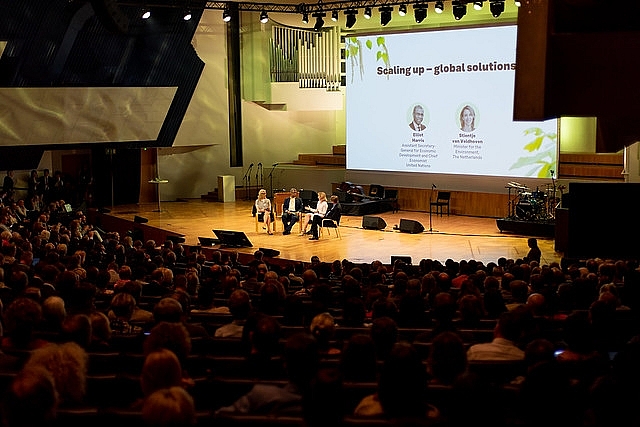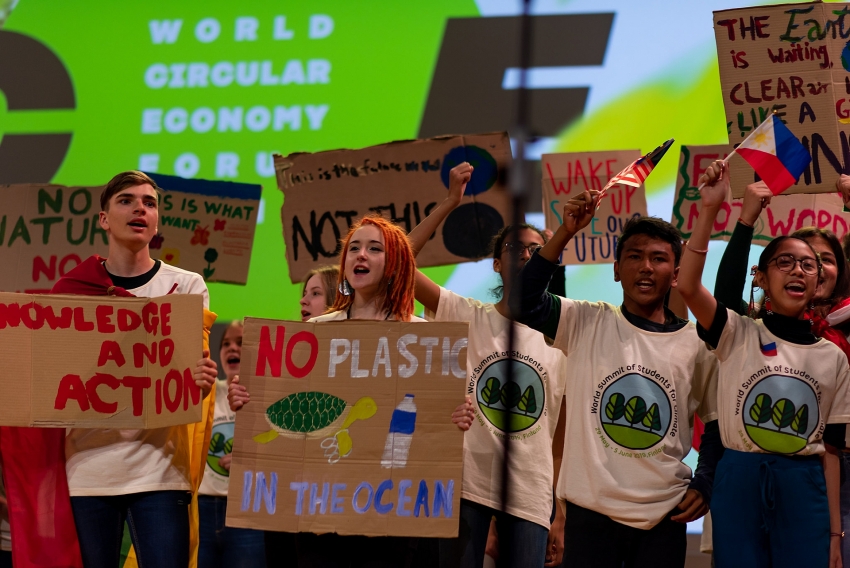WCEF 2019 seeking solutions for sustainable development
The three-day WCEF brings together more than 2,000 business leaders, policymakers, and experts to present the world’s best circular economy solutions. The event covers 17 plenary and parallel sessions with keynotes speeches, thematic discussions, and networking opportunities.
 |
| WCEF 2019 aims to scale up circular economy transition by providing useful experience in environmental protection |
The WCEF examines how businesses can grasp new opportunities, gain a competitive advantage through circular economy solutions, and how the circular economy contributes to achieving the UN Sustainable Development Goals.
“We believe that truly competitive solutions are born when business and environment go hand in hand. Our strong message is that in order to develop a circular economy, we must work together to reduce the use of things prone to environmental pollution,” Juha Markannen, trade ambassador from the Ministry of Foreign Affairs of Finland, told VIR.
“We hope that WCEF 2019 will attract more attention from the world as we must take action now to protect the environment for the sake of sustainable development,” he said. “In the next era of the circular economy, it is time to transform ‘the best kept secret’ into global impact. Great solutions have been identified all over the world. We now need to scale things up.”
 |
| WCEF 2019 gas drawn in thousands of participants |
The first WCEF was organised in Helsinki in June 2017 with 1,600 participants from nearly 100 countries. In 2018, Sitra brought the concept to Yokohama, Japan where more than 1,100 circular economy experts discussed what we need to do to create a true circular economy by 2050.
The WCEF 2019 builds on the forums of 2017 and 2018. The WCEF 2017 identified the key elements of a circular economy and showcased solutions and lessons from around the world. The WCEF 2018 painted visions of a circular future to strive towards and encouraged the world’s leading economies to set out on this path.
The WCEF 2019 has a strong emphasis on scaling up the circular economy transition. This involves growing investments into circular economy businesses, spreading and adopting new technologies, and making significant regulatory changes that enable the circular economy to flourish.
Finland is a frontrunner in the field of circular economy with innovative solutions coming from extensive collaboration among public and private sectors, which has also gained international attention thanks to its wide scope and pragmatic approach.
For Finland, circular bioeconomy is a tool for achieving sustainable development, combatting climate change, saving natural resources, and improving the state of the environment – all the while generating economic growth and jobs.
According to estimates, the circular economy may contribute an annual added value of at least €3 billion to the Finnish economy by 2030.
Set to be a global circular economy leader by 2025, Finland was the first country in the world to release a national circular economy roadmap, outlining the way to sustainable well-being and a successful carbon-neutral future. The Finnish Innovation Fund Sitra has played a key role in establishing the circular economy concept in Finnish society.
In the public sector, many municipalities have taken voluntary, active steps towards a more sustainable future. One example is the Smart & Clean Helsinki Metropolitan, while the education sector, thousands of Finnish school and university students are learning about applying circular economy principles.
What the stars mean:
★ Poor ★ ★ Promising ★★★ Good ★★★★ Very good ★★★★★ Exceptional
Related Contents
Latest News
More News
- First members of Danang International Finance Centre revealed (December 22, 2025 | 17:39)
- Securing capital and efficiency for Vietnam’s 2026-2030 growth ambitions (December 17, 2025 | 10:00)
- Driving double-digit growth through green and circular transformation in Vietnam (December 17, 2025 | 09:00)
- Vietnam bucking trend in the global M&A landscape (December 16, 2025 | 14:20)
- Vietnam’s green transition demands collective financial action (December 15, 2025 | 12:00)
- VIR workshop highlights capital and policy for sustainable development (December 15, 2025 | 11:00)
- National Assembly approves pilot mechanisms to accelerate major projects in Hanoi (December 12, 2025 | 11:29)
- Vietnam eases policy approval requirements, simplifies foreign and outbound investments (December 11, 2025 | 17:53)
- Unpacking new momentum in Vietnam’s M&A market (December 10, 2025 | 09:59)
- Forum honours outstanding M&A deals, strategies, and advisory firms (December 09, 2025 | 18:22)

 Tag:
Tag:

























 Mobile Version
Mobile Version